Incident List View
The Incident List view gives you a clear view of all your incidents along with its relevant information at a single glance.
Accessing the Incident List view
First, select the Team from the team picker on the top
(1) Click on Incidents from the sidebar
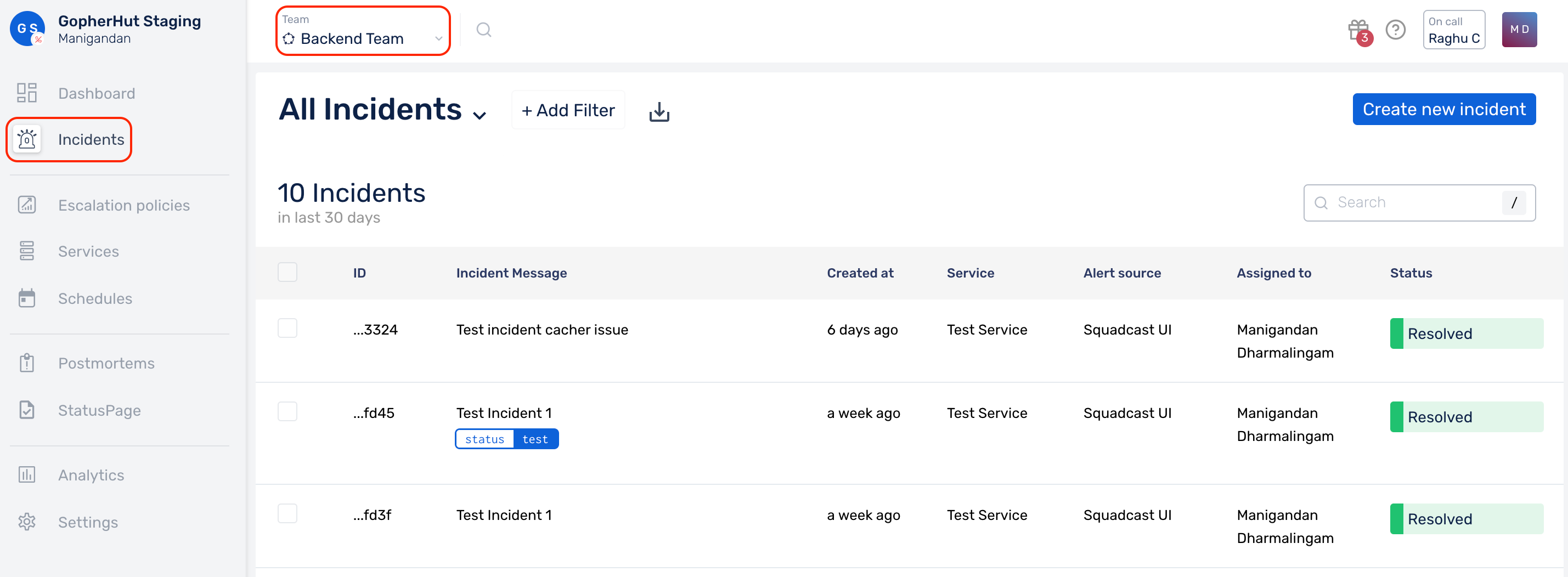
(2) View the following details for every listed incident:
- Incident Message
- Created At
- Service it is affecting
- Assigned To
- The current Status of the incident
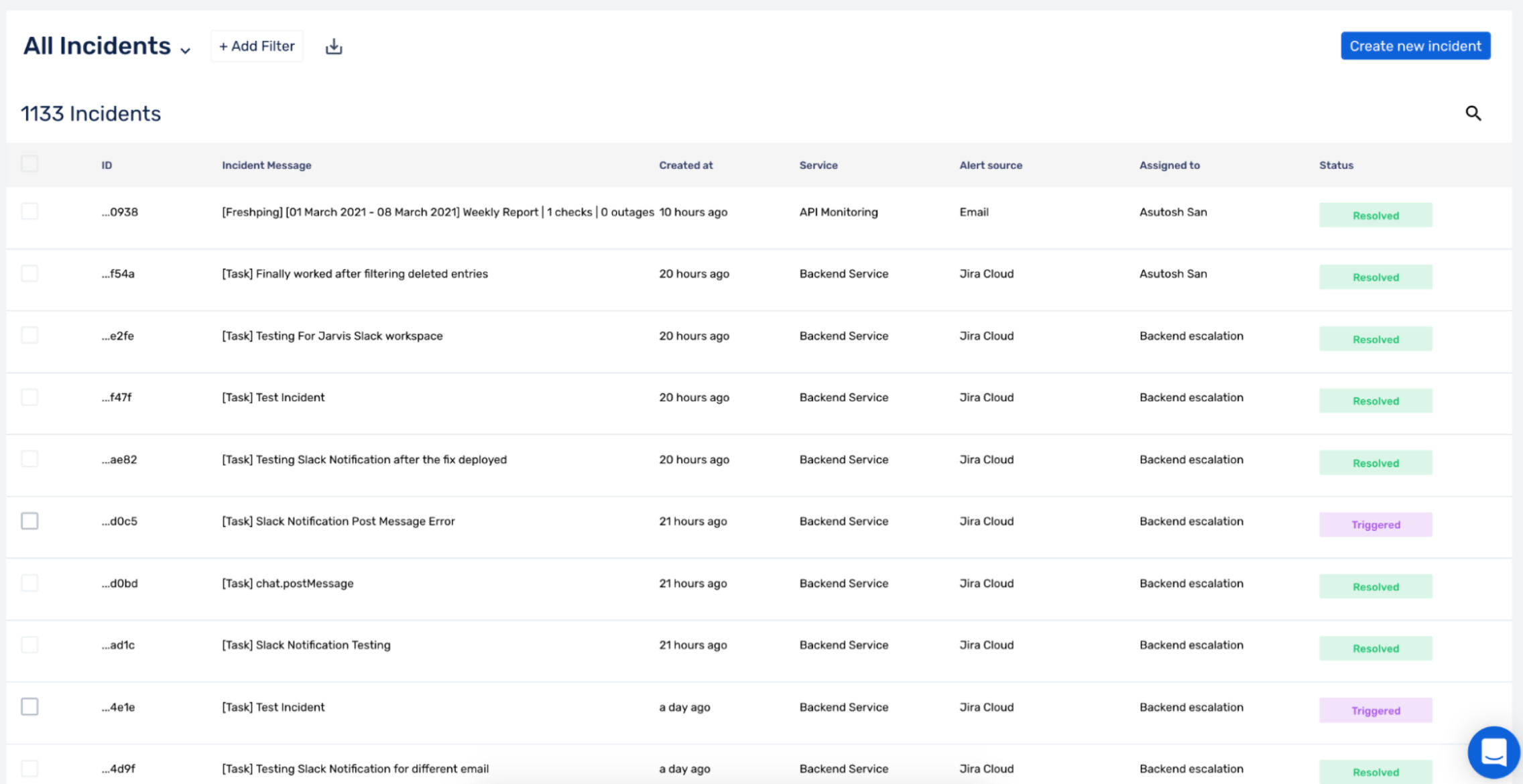
Quick Filter by Incident Status
Filter incidents by status by using the status drop-down and choosing the appropriate option.

Bulk Actions
Acknowledge and Resolve multiple incidents in one go by bulk selecting the listed incidents and choosing the appropriate action button.
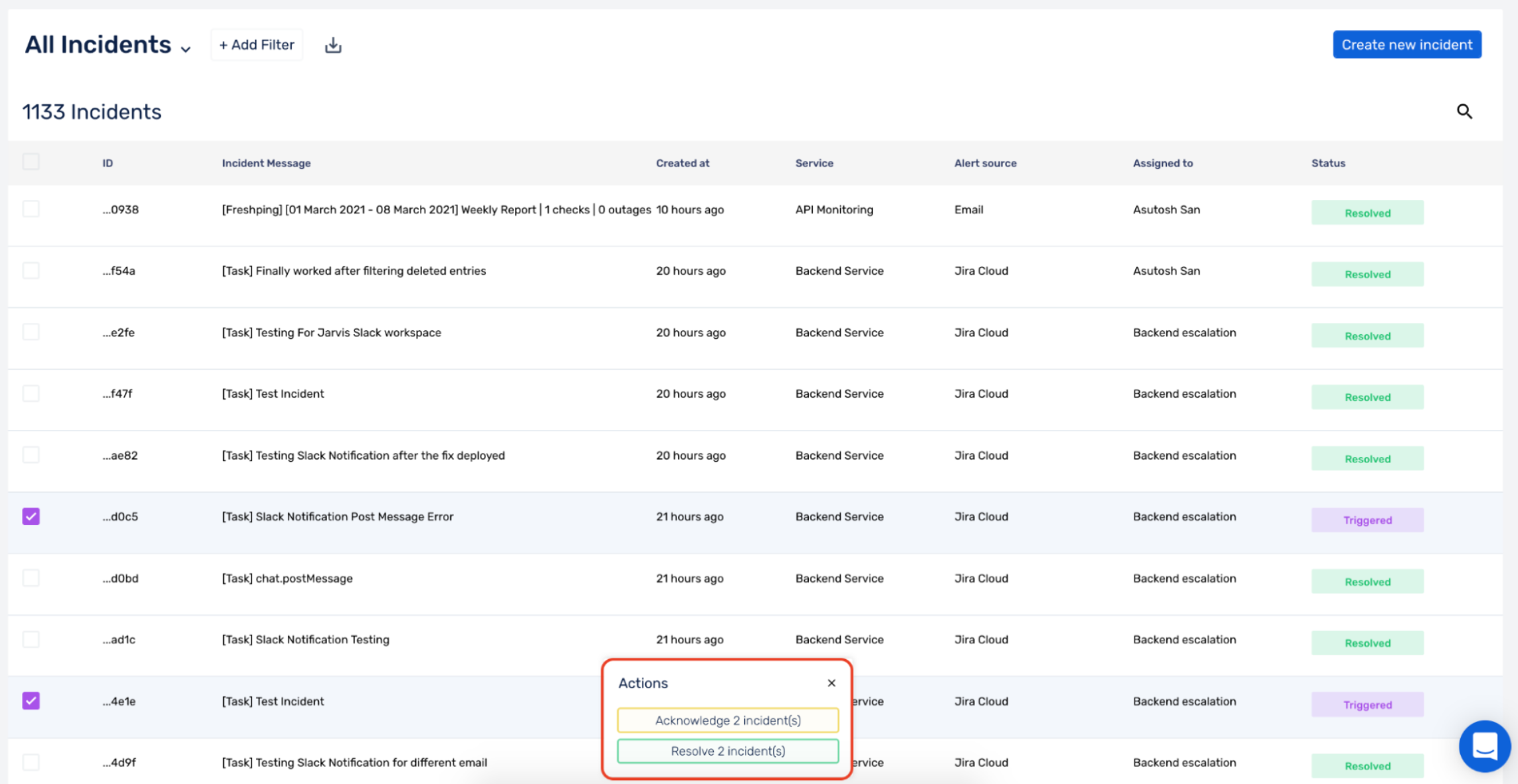
Note: When an action is selected, it is performed instantly without asking for confirmation so be wary while performing the action.
Create an Incident Manually
(1) Click on Create new incident

(2) Enter the Incident Title, Incident Description, select the Service, specify who should be notified under Assign To, add Tags and click on Create new incident to create the incident
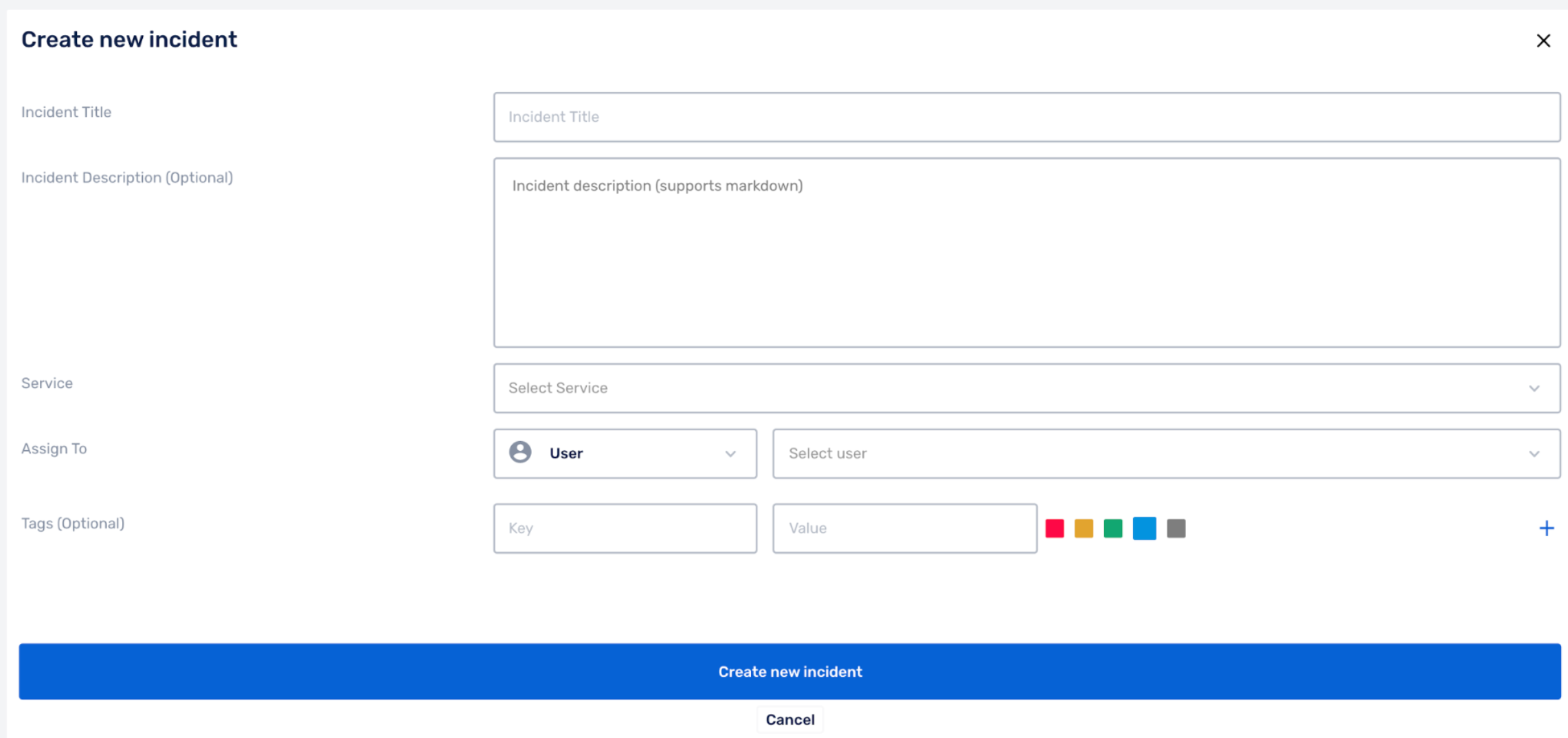
Filter Incidents
(1) Click on Add Filter to filter incidents and create custom views for your Team

(2) Incidents can be filtered by:
- Date & Time
- Service
- Alert Source
- Assigned To
- Tags
- Status
- Postmortem

Learn more about each filter value here.
If you want to filter incidents that are in a particular state (Triggered, Acknowledged, Resolved or Suppressed), in addition to the other filters you use, add the Status filter as well.
Export Incidents
(1) Add the filters of your choice and click on the download icon and select either the CSV or the JSON format option from the drop-down

Incident Export Limit
At the moment, you can export only a maximum of 1000 incidents at once. Please tweak your filters to ensure the count of listed incidents is within the limit for every export. There are no limits on the number of times you can export incidents.
Using our Export Async API, there is no limit on the number of incidents you can export. You will receive an email once the download is complete.
For more information, check out our Export Async API Documentation.
(2) The exported CSV or JSON file will have the following fields:
- Incident ID
- Title
- Description
- Status
- Service
- Alert Source
- Assignee
- Created At
- Acknowledged At
- Resolved At
- Tags
- Event Count
- TTA (Time to Acknowledge)
- TTR (Time to Resolve)
- Activity Logs
Exporting incidents as CSV or JSON is available as a Public API. Check out the API Documentation here.
Incident List Search
Search for incidents based on either the Incident Message or the Incident Description using the text Search box.
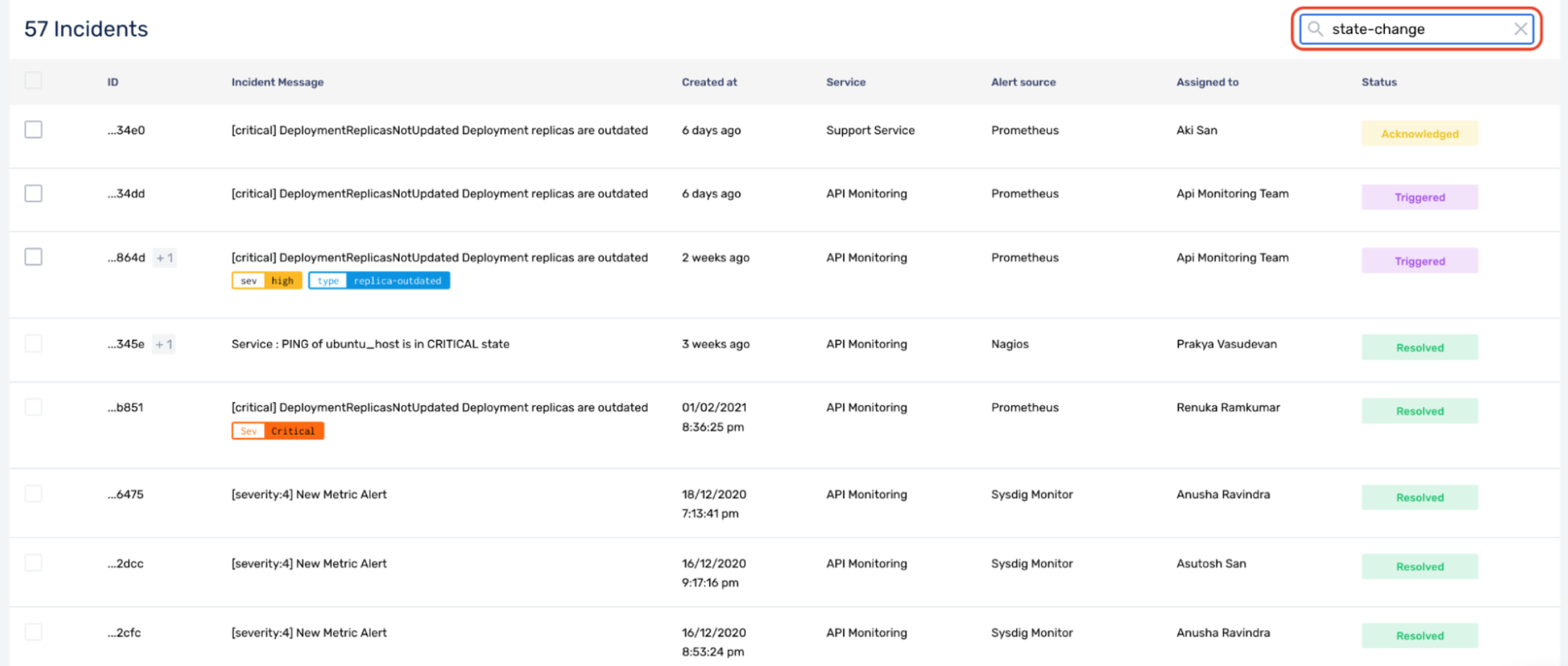
Load More Incidents
In order to load more incidents, just scroll to the end of the list and the available existing incidents will be automatically displayed.
